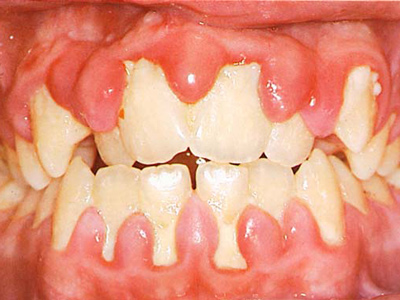
I. Definitions:
1. Gum disease:
Gum disease is an inflammation of the gums that can progress to affect the bone that surrounds and supports the teeth . The cause of the disease is caused by bacteria in plaque - a colorless film , constant adhesive formed on your teeth . If not removed by daily brushing and flossing , plaque and bacteria will form will not only impact on the teeth and gums , which even affects the gum tissue and bone supporting the teeth . This makes the teeth become loose , fall out or have to be removed .
2. Inflammatory periodontal disease:
At this stage, the supporting bone and ligament damage that has been unable to recover. Your gums may begin to form below the gum line bag, this bag is stagnant where food and plaque. Proper dental treatment and improved dental care regimen at home to help avoid more serious injury.
II. Symptoms:
1. Symptoms of gum disease:




